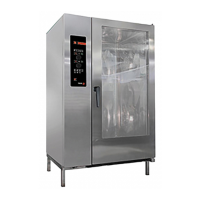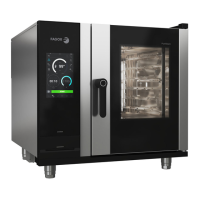99
16/11/2012
68
7
77
7.
..
.-
--
-
Ignition control:
Ignition control: Ignition control:
Ignition control: Depending on the number of
burners, the number of ignition controls also varies.
For example:
For example:For example:
For example:
061
061061
061: CONVECTION ignition control (X 1)
101
101101
101 : CONVECTION ignition control ( X1 )
102
102102
102 : CONVECTION ignition control ( X1 )
201
201 201
201 : CONVECTION ignition control ( X2 )
202
202202
202 : CONVECTION ignition control ( X2 )
Similarly for the GAS valves
GAS valvesGAS valves
GAS valves
8.
8.8.
8.-
--
-
GAS valve (SIT) (Specifically for 50 Hz or
GAS valve (SIT) (Specifically for 50 Hz or GAS valve (SIT) (Specifically for 50 Hz or
GAS valve (SIT) (Specifically for 50 Hz or for 60 Hz)
for 60 Hz)for 60 Hz)
for 60 Hz)
GAS PATHWAY
GAS PATHWAYGAS PATHWAY
GAS PATHWAY
This small diagram shows the GAS pathway with details of where the GAS and AIR mixture takes place.
As soon as the CHAMBER CARD
CHAMBER CARDCHAMBER CARD
CHAMBER CARD detects, via the CHAMBER TEMPERATURE PROBE
CHAMBER TEMPERATURE PROBECHAMBER TEMPERATURE PROBE
CHAMBER TEMPERATURE PROBE that the temperature inside the
CHAMBER, pre-established by the user, has not been reached, the chamber card sends a signal to the GAS CARD
GAS CARDGAS CARD
GAS CARD, which
in turn acts on the GAS VALVE
GAS VALVEGAS VALVE
GAS VALVE. This allows the GAS to pass to the MIXER/BLOWER
MIXER/BLOWERMIXER/BLOWER
MIXER/BLOWER unit where the correct GAS – AIR
mixture takes place, as required for perfect combustion in the burner thanks to the spark generated by the SPARK PLUG
SPARK PLUGSPARK PLUG
SPARK PLUG.

